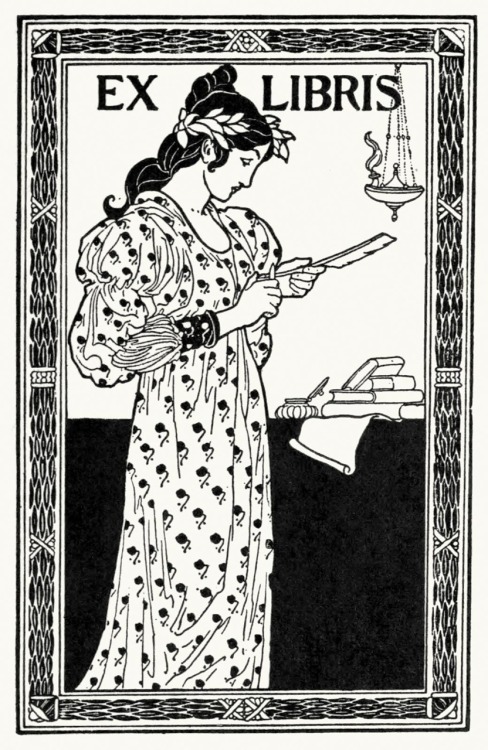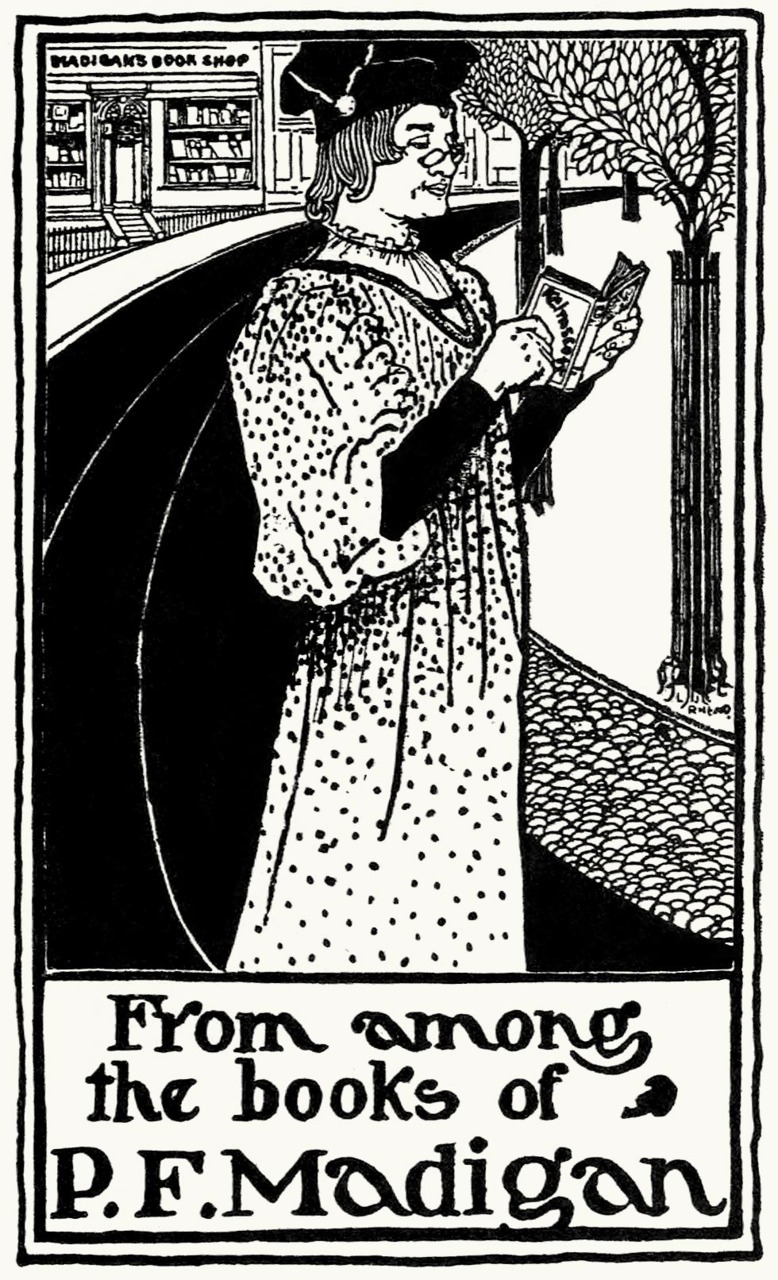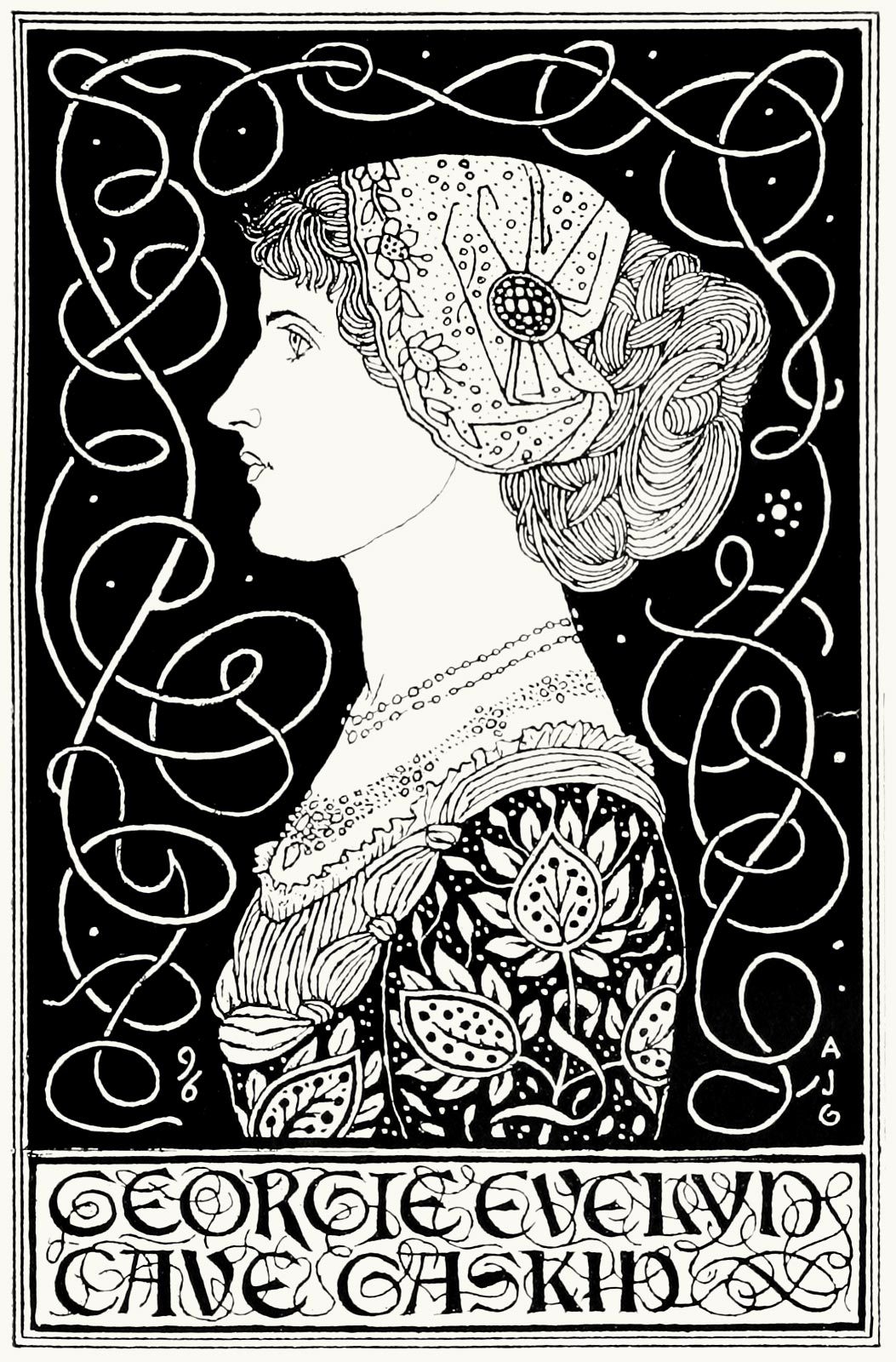
I have always been intrigued by bookplates. There's something slightly thrilling about opening a book and finding a bookplate pasted inside the cover. I love browsing in used bookstores and coming across these small prints that give a glimpse of the previous owner and add history to the book.You don't often see them used these days and with the rise of e-books, they may well die out completely. A bookplate, or Ex Libris, is a small print for pasting inside the cover of a book to express ownership. Ex-Libris means "from the library of" and was frequently inscribed on bookplates which were printed on heavy paper and glued into books by the purchaser.
Between the late 15th and 19th centuries, books were expensive, prestigious, luxury items. Most were bound in leather, and printed in gilt. To own a book was to hold status in society. Those wealthy enough to have books wanted something to identify them as the owner of a particular book. So, they commissioned bookplates, a print they could paste inside the front cover. That way, anyone who read their book would know exactly who it belonged to. The first bookplates usually incorporated the decorative coats of arms of the fabulously wealthy. By the late nineteenth century, bookplates had developed into a highly imaginative form of the engraver’s and printmaker’s art in miniature.
Bookplates are highly collectible (either loose or attached to books). Many collectors concentrate on specialized themes, those designed by famous artists, or those owned by notable people, like this one belonging to Ernest Hemingway:
There are a number of organizations devoted to bookplate collecting, such as American Society of Bookplate Collectors & Designers and The Bookplate Society (UK). They are very often of high value, exceeding that of the book in which they are placed.
After reading more about them and seeing so many beautiful examples of vintage bookplates, I'm thinking of purchasing some and placing them in all the books in my personal library. What do you think? Do bookplates have a place in the increasingly paperless world?
Here are some of my favorite from designs that I've come across on the internet:













2 comments:
They certainly do. But if you’re interested in ex-libris you should consider commissioning a personal one. There are many artists who make ex-libris (hey, I’m one of them) and will work with you to produce a design which reflects who you are. The result will be an original print - wood engraving, etching etc - on high quality paper (important if the ex-libris are going into good books). You can also arrange for the artists to provide you with the block or plate so you can have additional copies printed yourself. So much better than those where you simply fill your own name in the blank space provided!
All the best – really love your blog.
John Watson
www.jawatson.co.uk
How much does it cost to commission a personal Ex Libris? I'd like to give one as a gift, but I think it might be too expensive.
Post a Comment